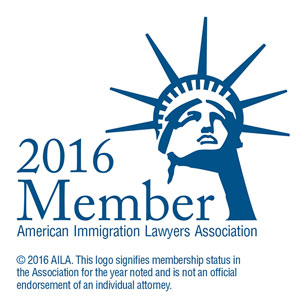The Department of Justice’s complaint claiming that Facebook discriminated against US workers even when it followed DOL regulations for sponsoring foreign national workers is troubling. It renders every employer vulnerable to charges of discrimination each time it files a labor certification on behalf of a foreign national worker.
When an employer wishes to sponsor a foreign national for a green card, it is required to test the domestic labor market for qualified workers before a PERM labor certification is approved. Labor certification is the first step in the employment sponsored green card process. It is rather odd that when Facebook followed the DOL rules regarding recruitment for a labor certification, another agency of the federal government, the Immigrant and Employee Rights (IER) Section of the Department of Justice (DOJ) accuses it of discriminatory practices under INA 274B(a)(1). Facebook was not accused of violating the DOL rules. Under the DOL rules, if the employer finds a qualified US worker after testing the labor market, the employer cannot go ahead with the labor certification and is not required to hire the US worker and terminate the foreign worker who already holds the job often on an H-1B visa. The IER has accused Facebook of discrimination for not hiring US workers for advertisements that were related to a labor certification filed on behalf of a foreign national worker. The labor certification process requires the employer to test the US labor market with respect to an application filed on behalf of a foreign worker, and contrary to the allegations in the IER complaint, is not set up as a program for recruiting US workers.
The IER complaint says at paragraph 24 that “in conducting recruitment, employers must also engage in a good faith search that closely resembles the employer’s normal recruiting process.” It cites Matter of Am. Specialty Pharmacy, 2016-PER-00016, 2019 WL 2910815 (BALCA 2019). The IER accuses Facebook of implementing a recruitment process intentionally designed to deter US workers from applying, thus discriminating against US workers because of their citizenship status in violation of INA 274B(a)(1)(A). The complaint states that Facebook uses recruitment methods for PERM labor certifications that were different than those it employs for its regular positions. For example, Facebook requires resumes to be sent by postal mail for advertisements related to labor certifications but for open market positions they will accept resumes by e mail. Facebook also does not post advertisements on their website for labor certification positions but for their other positions they do post on their website.
However, Matter of Am. Specialty Pharmacy, supra, which IER cites in its complaint, just says that: “We have interpreted this regulation as placing a burden on the Employer to conduct a good faith recruitment effort.” It cites East Tennessee State University, 2010-PER-00038, slip op. at 11 (Apr. 18, 2011) (en banc), which does go into some more detail, but not in the direction that IER suggests. BALCA stated in East Tennessee State University that “employers seeking permanent labor certification may have to conduct their recruitment in a manner different than they would normally in order to ensure that the position is clearly open to all qualified U.S. workers.” In a 2008 Guidance Memo, the DOL also confirmed that “given that the permanent labor certification program imposes recruitment standards on the employer that may deviate from the employer’s normal standards of evaluation, the Department understands and appreciates the legitimate role attorneys and agents play in the permanent labor certification process.”
DOL also insists on recruitment practices that have no bearing on real world recruitment such as placing print advertisements in two Sunday newspapers even when most employers and job seekers do not rely on the print classified sections any longer. Indeed, most of the advertisements in the classified Sunday edition of the NY Times have the look and feel of labor certification advertisements. Although the IER accuses Facebook of requiring applicants to respond by postal mail rather than online, when its non-labor certification advertisements allow for online responses from applicants, that in itself is not a violation of the DOL rules, and DOL has already conceded that the employer’s labor certification recruitment deviates from normal labor practices. While in hindsight, Facebook should have done more to reconcile its labor certification advertisements with its real world advertisements, the labor certification process requires the employer only to test the labor market and not to use it to hire US workers. The DOL imposes other requirements on an employer during labor certification recruitment, which are unimaginable in real world recruitment. If a US worker applicant does not respond to the employer’s invitation to an interview, the employer must go the extra mile to demonstrate that it did indeed contact the applicant who never showed up by sending up a follow up e mail or letter to the uninterested candidate, and must prove that this candidate actually received the communication! Even when the US worker applicant was interviewed and rejected, the employer must prove that it actually made contact with the applicant. Thus, even if an employer mirrors its real world recruitment with its labor certification recruitment, and even goes beyond, it will still be vulnerable to a citizenship discrimination claim by the IER because labor certification recruitment inherently requires a good faith test of the labor market, and not to hire US workers, before the labor certification can be filed and certified by the DOL.
Rather than penalize an employer for following the rules set forth in 20 CFR 656, Congress, the administration, or both, could change the rules governing the labor certification process to make them more rational and comport with real world practices. In a 2008 article Walking The High Wire Without A Net – The Lawyer’s Role In The Labor Certification Process, Bender’s Immigration Bulletin, February 1, 2009, Gary Endelman and I noted how far removed the labor certification process truly is from an employer’s real world recruitment practices. Although the labor certification process requires an employer to conduct a “good faith” test of the US labor market to determine whether US workers are qualified or available for the position held by the foreign national, the very notion of “good faith” seems oddly out of place when used with reference to a recruitment effort that achieves its desired objective by failing to locate any qualified job applicants. Only in the labor certification world do you win by losing. Unable to utilize real world recruitment standards, compelled to base evaluations upon the entirely artificial concept of “minimal qualifications” that does not exist outside the cordon sanitaire of 20 CFR §656, wedded to an inflexible job description that can never change regardless of an employer’s business needs or a worker’s evolving talents, and effectively prohibited from taking into consideration the very subjective character traits whose presence or absence is the most reliable predictor of effective job performance, the labor certification process is fundamentally at odds with the very economic system it allegedly seeks to serve.
It is reiterated that an employer is under no legal obligation to hire a qualified applicant at the end of the process. If the employer finds a U.S. worker who is qualified for the position, the labor certification dies. In other words, the employer cannot file the labor certification on behalf of the foreign national worker. This makes sense as it would be rather cruel to fire the foreign worker on a temporary work visa like the H-1B, which can extend for many years, and replace them with the US worker. Even if the employer hires this minimally qualified US worker, and files the labor certification on behalf of the foreign worker, the employer may be found to be in violation as a result of “diversion.” The Board of Alien Labor Certification Appeals (BALCA) has held that a US applicant cannot be diverted to another position, even a more senior position. See Engineering Technology, Inc.,89-INA-10 (BALCA 1990), Sam’s Exxon, 91-INA-362 (BALCA 1992). BALCA has found “diversion” even when the U.S. worker was hired for the same position as the foreign national worker where the employer was unable to establish multiple openings. Aloha Airlines, 91-INA-181 (BALCA 1992).
The statutory basis for labor certifications is provided in §212(a)(5) of the Immigration and Nationality Act (“INA”). Under INA §212(a)(5), an alien is deemed “inadmissible unless the Secretary of Labor” certifies, inter alia, that “there are not sufficient workers who are able, willing, qualified…and available at the time of application” among the U.S. workforce. A plain reading of INA §212(a)(5) does not in any way suggest that an employer must seek to recruit U.S. workers in order for the Secretary of Labor to certify that there are a lack of U.S. workers who are qualified and willing at the time of the application. Interestingly, INA §212(a)(5) is silent about requiring the employer to advertise or to establish that it advertised the position without reference to unduly restrictive requirements. It appears that the Department of Labor has created out of whole cloth the current system it enforces against U.S. employers. Gary Endelman previously wrote for the National Foundation for American Policy: “There was no mention of individualized recruitment in the proposed labor certification regulations on November 19, 1965, or the final version of these same implementing rules that came out on December 3, 1965. There was no sense that employers had to advertise; the availability of U.S. workers, or their nonavailability, was based solely on statistics as embodied in Schedules A and B, respectively.”
In discussing the labor certification requirement in the 1965 Amendments,8 Senator Edward Kennedy (D-MA) stated:
It was not our intention, or that of the AFL-CIO. that all intending immigrants must undergo an employment analysis of great detail that could be time consuming and disruptive to the normal flow of immigration. We know that the Department of Labor maintains statistics on occupations, skills, and labor in short supply in this country. Naturally, then, any applicant for admission who falls within the categories should not have to wait for a detailed study by the Labor Department before his certificate is issued …(W]e would expect the Secretary of Labor to devise workable rules by which he could carry out his responsibilities under the law without unduly interrupting or delaying immigration to this country. The function of the Secretary is to increase the quality of immigration, not to diminish it below levels authorized by the law.
Thus, one of the key drafters of the bill, Senator Kennedy, never mentioned nor contemplated the need for the individualized, wasteful, and unreal recruitment that the DOL has imposed on employers. Indeed, after all this recruitment, the DOL only requires the employer to test the U.S. labor market. In other words, employers must prove a negative, namely, that there are no minimally qualified workers for the position. The employer is not required to hire minimally qualified workers. If the employers find qualified workers, they are precluded from filing the labor certification application on behalf of the foreign national worker. Through this process, the DOL forces employers to make pawns of U.S. worker applicants by advertising the position, having them apply for the position, interviewing them, and in the end, not encouraging their hire even if the employer wants them in addition to the foreign national worker.
And now the complaint against Facebook brought by a sister federal agency further highlights the contradictions in the labor certification program. The IER complaint is aimed at discouraging employers from sponsoring skilled foreign national workers for permanent residence lest they be accused of citizenship discrimination after following the labor certification process. Whatever may be the motivation behind this action – and it is not unreasonable to speculate that it may be linked to President Trump’s dislike for Facebook and Twitter – the end result is that skilled foreign national workers deserving of green card sponsorship by a US employer bear the brunt, and America loses the most if they are forced to leave.





